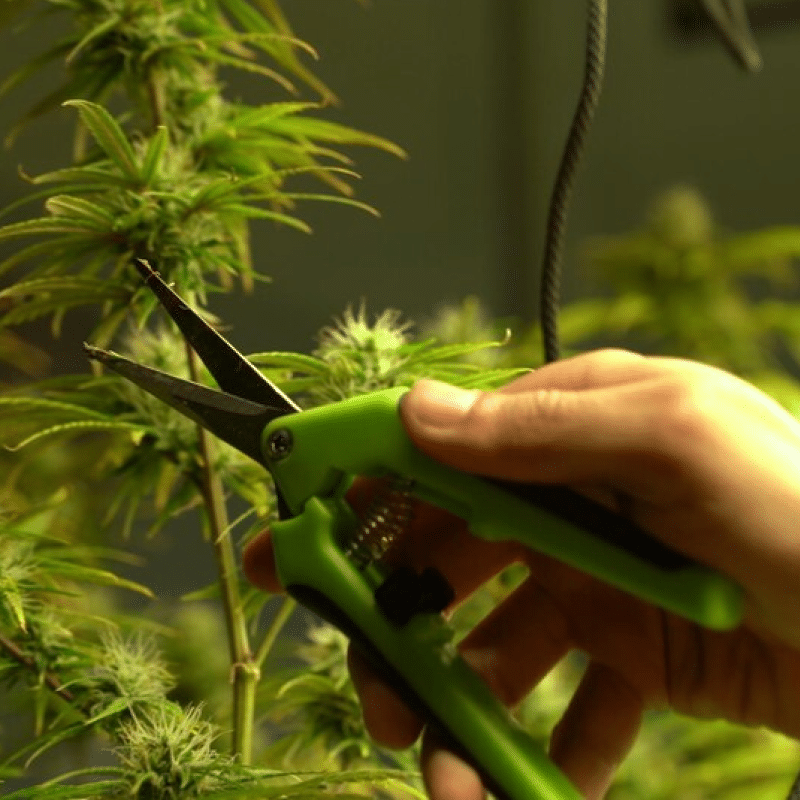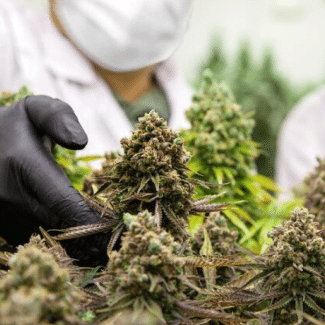Navigating the Ohio Cannabis Cultivation Industry
The Ohio cannabis cultivation industry is rapidly evolving, presenting both significant opportunities and complex challenges for entrepreneurs and farmers. As the medical marijuana program expands and the possibility of recreational legalization looms, understanding the market dynamics, compliance requirements, and innovative cultivation techniques is crucial for success. This summary highlights key areas such as market demand, sustainability practices, and the financial considerations involved in establishing a cannabis cultivation operation in Ohio.

The cannabis cultivation industry in Ohio is really taking off. The state keeps expanding its medical marijuana program. For entrepreneurs and farmers, this field offers a great opportunity. But it also comes with some tricky challenges. It’s important to understand these opportunities and tackle the challenges if you want to get into the cannabis cultivation business in Ohio.
Opportunities in Ohio's Cannabis Cultivation
Market Demand and Potential Profitability
The rapidly expanding medical marijuana program and the prospect of future recreational legalization in Ohio have cannabis cultivation exponential. That surge in demand also translates into lucrative opportunities for licensed cultivators who can produce top-shelf cannabis products while supplying those products to dispensaries across the state.
With success comes the realization that cultivators can grasp this market and obtain profitability that is very substantial. A return on investment for those who can meet the demand with quality products is very strong, making cannabis cultivation an attractive opportunity in Ohio.
Innovations in Cultivation Techniques and Technology
Ohio is currently experiencing unparalleled growth in farming practices and the application of technology in cannabis cultivation. Innovative methods include hydroponics and aeroponics, furthering the capability of cultivators to increase crop yield while enhancing product quality. These techniques, combined with genetics and breeding, increase the capacity for Ohio cultivators to realize an optimized version of their productive efforts.
The integration of technology further provides automated climate control, precision irrigation, and informed analytics to the cultivator for comprehensive streamlining of his/her operation, among many others. These automated tools go a long way in helping yield consistent crops and curtailing water, energy, and labor costs.
Opportunities for Local and Sustainable Farming Practices
Ohio’s cannabis cultivation industry is feeling more consumer demand for the products they grow through sustainable means. Many cultivators look to expand their operations through organic growth, renewable energy, and water conservation. By focusing on sustainability, they cater to consumer preferences and contribute to the greater good of being responsible and sustainable in an industry they are part of.
With its long history of agricultural production, Ohio is uniquely positioned to host local cannabis farming. Operating in local and sustainable farming allows cultivators to tap into a niche yet growing market of consumers who put a premium on locally sourced, eco-friendly goods. This also can help them command a premium price for their products, representative of the greater willingness to pay of this consumer for more sustainably produced cannabis.
Regulatory Challenges
Licensing and Compliance Requirements for Growers
Obtaining a cultivation license in Ohio is an extremely burdensome process and rigorous affair with great attention to detail required, heavy financial investment, and an unyielding dedication to meeting strict regulatory requirements. From security and quality control measures to operational transparency, growers have to prove in all ways how they would meet the letter of the law.
Once licensed, growers are expected to have an ongoing commitment to compliance with the regulations put forth by the state. This means that frequent reporting, inspection, and product testing are in store for those growers. Consequences for non-compliance can be quite serious, including things like fines, penalties, and/or license revocation. Growers must, by necessity, remain well-informed and educated in regard to these constantly changing regulations.
Environmental Regulations and Sustainability Concerns
While cannabis cultivation creates economic opportunities, it also gives rise to environmental concerns. The industry uses a lot of water and energy and creates a lot of waste, thus requiring careful consideration and the implementation of sustainable practices. Ohio’s regulations for environmental controls try to decrease these impacts by requiring the most responsible methods of cultivation to manage resources.
Increased consumer awareness and evolving regulatory standards place added pressure on Ohio cultivators to adopt sustainable practices. Complying with environmental legislation in terms of waste management and controlling emissions has, therefore, become not only a mandatory action but also a strategic possibility for creating positive brand awareness and appealing to environmentally conscious consumers.
Navigating Zoning and Land Use Laws
Growing cannabis in Ohio is highly variable in terms of zoning restrictions and land-use regulations from municipality to municipality. A prospective cultivator has to take pains in researching and understanding the specific zoning laws that apply to a precise location in order to operate legally.
Many times, zoning regulations disallow cultivation near residential areas, schools, and other sensitive areas. Finding land suitable for cultivation is thus challenging because of this very fact. Growers will have to carefully research the land opportunities available to them and ensure that operations are compliant with the local requirements on zoning.
In addition to zoning, farmers will have to deal with a number of other land use regulations that might influence how they operate their business. Additional agricultural restrictions, water rights, and building codes may also apply. Consulting the local authorities is hereby relevant to maintaining full compliance and preventing expensive delays or possible litigation.
Financial Considerations
Costs Associated with Starting and Maintaining a Cultivation Operation
Starting a cannabis cultivation operation in Ohio will be expensive. In addition to licensing fees, there are facility build-out or retrofit, equipment purchase, and the cost for required technology to grow. Growers also face ongoing expenses related to utilities, labor, and compliance monitoring.
Effective financial management is crucial to ensure that these costs do not overshadow potential profits. By carefully budgeting and managing expenses, cultivators can optimize their operations and maximize profitability.
Accessing Funding and Managing Operational Expenses
Access to funding for cannabis cultivation isn’t widely available in Ohio due to federal restrictions on banking with businesses involved in the cannabis industry. Most growers pursue private investors, venture capital, or specialized cannabis financial services.
It’s the maintenance of profit through the best operational expense management in the cannabis cultivation industry. A cultivator is supposed to monitor the cost keenly and optimize resource utilization through any possible strategy that may involve bulk buying of supplies or even long-term contracts.
ROI Expectations and Market Competition
Any projected return on investment for cannabis grow operations in Ohio can be quite great, but the actual results will depend on many different variables, including market conditions, crop yield, and operation efficiency. Prospective growers should do an in-depth financial analysis to set realistic expectations of a potential ROI.
The Ohio cannabis market will continue to tighten the screws of competition as more cultivators enter the fray. In their ability to supply the market and create differentiated products through qualities, sustainability, and, ultimately, branding by offering unique value propositions, these cultivators will find the distinction in a competitive landscape and engender loyalty with customers.
Case Studies
Several of Ohio’s cultivators have learned to navigate through the complexities of this industry and created successful businesses based on strategic planning, strenuous compliance, and innovative approaches. Successful cultivators set themselves apart from the competition by adopting more sophisticated growth techniques or specializing in niche markets such as organic cannabis.
Indeed, these successful cultivators have applied exemplary practices in such areas as regulatory compliance, sustainable farming, and financial management. As a result, new growers can gain valuable insight by researching their strategies to help avoid the common pitfalls of positioning in the Ohio cannabis market.
Regulatory Hurdles and Financial Struggles Faced by Other Growers
While there is great opportunity in Ohio’s cannabis cultivation industry, cultivators face a lot of setbacks. Those would be changes in regulation and compliance issues that are considered to hamper success. Lessons from such experiences only underscore the need for one to stay abreast of legal developments and adopt a proactive approach toward compliance.
Other financial challenges include poor estimation of start-up costs and/or poor management of operational expenses. The new growers will also learn from the experiences of the growers studied on how to engage in better financial planning and expense management.
Conclusion
Anyway, the Ohio cannabis cultivation industry presents a great opportunity for those who, by hook or crook, can work their way around the convoluted regulatory process and other financial issues that go hand in hand with it. Despite the challenges, profitability is great in the industry.
The key component of the strategy for a prospective grower in the Ohio cannabis market will be to build up an articulated business plan, get proper funding, and be abreast of any regulatory requirements. Such consultations will be very important with legal experts, financial experts, and industry players for valuable guidance to avoid some common pitfalls.
As the industry continues to evolve, those demonstrating adaptability, innovation, and a commitment to sustainability will be in a leading position to thrive in Ohio’s cannabis cultivation industry.



